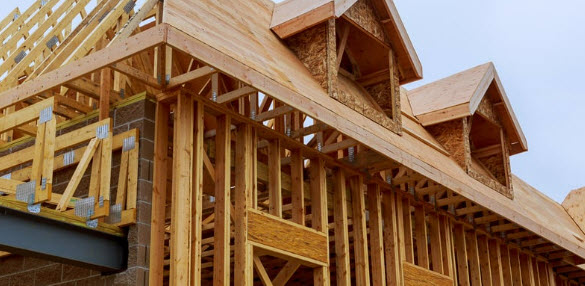Buying your first home is a monumental milestone. It’s a mix of excitement, anticipation, and, let’s be honest, a little bit of anxiety. You’re not just buying a property; you’re setting down roots, building equity, and creating a space that is truly your own. But in the complex world of real estate and mortgages, it’s easy to feel overwhelmed. Where do you even begin?
You begin right here.
This is your ultimate checklist for 2025—a comprehensive, step-by-step guide designed to turn your dream of homeownership into a reality. We’ll walk you through every phase, from building your financial foundation to that incredible moment you hold the keys in your hand. Let’s get you home. 🏡
Phase 1: The Financial Foundation (6-12+ Months Before Buying)
The journey to homeownership starts long before you ever tour a property. A strong financial foundation is the single most important factor in a smooth and successful home-buying process.
☐ Check & Strengthen Your Credit Score
Your credit score is your financial report card, and lenders will look at it closely to determine your loan eligibility and, most importantly, your interest rate. A higher score can save you tens of thousands of dollars over the life of your loan.
- What to Do: Get a free copy of your credit report from all three major bureaus (Equifax, Experian, and TransUnion) at AnnualCreditReport.com. Check for any errors and dispute them immediately.
- Target Score: While you can get an FHA loan with a score as low as 580, you’ll get much better rates and terms if you aim for 680 or higher. For a conventional loan, a score of 740+ is considered top-tier.
- Pro Tip: The best ways to boost your score quickly are to pay all your bills on time, pay down high-balance credit cards to lower your credit utilization ratio, and avoid opening new lines of credit.
☐ Create a Budget & Supercharge Your Savings
You’ll need a significant amount of cash on hand. It’s not just about the down payment; you also need to budget for closing costs and other expenses.
- Down Payment: This is the percentage of the home’s purchase price you pay upfront. While 20% is the traditional ideal (it helps you avoid Private Mortgage Insurance or PMI), many loan programs allow for much less. FHA loans require as little as 3.5% down, and some conventional loans allow for just 3% down.
- Closing Costs: These are the fees you pay to finalize the loan and transfer the property title. According to CoreLogic, closing costs typically range from 2% to 5% of the home’s purchase price. On a $350,000 home, that’s an extra $7,000 to $17,500.
- Cash Reserves: Lenders want to see that you’ll have some money left over after you close. This “rainy day” fund, often called PITI reserves (Principal, Interest, Taxes, and Insurance), should cover 2-3 months of mortgage payments.
☐ Calculate Your Debt-to-Income (DTI) Ratio
Your DTI ratio is a key metric lenders use to assess your ability to manage monthly payments. It’s the percentage of your gross monthly income that goes toward paying your monthly debt obligations.
- The Formula:
DTI = (Total Monthly Debt Payments / Gross Monthly Income) x 100 - What to Include: Your total monthly debt includes things like rent, student loan payments, car payments, credit card minimums, and personal loans, plus your estimated new mortgage payment.
- Target Ratio: For most conventional loans, lenders look for a DTI of 43% or less. Some government-backed programs may allow for a DTI up to 50% for well-qualified borrowers.
☐ Explore First-Time Home Buyer Programs
Don’t leave free money on the table! There are numerous programs designed specifically to help first-time buyers overcome financial hurdles.
- Loan Programs:
- FHA Loans: Government-insured loans with lower credit score and down payment requirements.
- VA Loans: For eligible veterans, service members, and surviving spouses. Often require no down payment.
- USDA Loans: For buyers in eligible rural and suburban areas, also with no down payment requirement.
- Down Payment Assistance (DPA): Nearly every state and many cities offer DPA programs in the form of grants (which don’t have to be repaid) or low-interest second mortgages.
Phase 2: Building Your Team & Getting Pre-Approved (3-6 Months Out)
With your finances in order, it’s time to assemble a team of professionals who will guide you through the process.
☐ Research Mortgage Lenders
The lender you choose is a long-term partner, so it pays to shop around. Don’t just go with the first bank you find.
- Where to Look: Consider different types of lenders, including national banks, local credit unions, and mortgage brokers who can shop rates from multiple lenders on your behalf.
- What to Do: Get at least three official Loan Estimates. This standardized document makes it easy to compare interest rates, fees, and closing costs side-by-side.
☐ Get a Mortgage Pre-Approval
This is arguably the most important step in the active home search. A pre-approval is a conditional commitment from a lender for a specific loan amount. It shows sellers and real estate agents that you are a serious, qualified buyer.
- Pre-Qualification vs. Pre-Approval: A pre-qualification is a quick estimate of what you might be able to borrow based on self-reported information. A pre-approval is much more powerful; it means the lender has actually verified your finances (income, assets, debt, and credit).
- Why It’s Critical: In a competitive market, many sellers won’t even consider an offer without a pre-approval letter. It also gives you a firm budget so you know exactly what you can afford.
☐ Hire a Top-Notch Real Estate Agent
A great buyer’s agent is your advocate, negotiator, and guide. They have deep local market knowledge and will help you navigate every step from finding the right home to negotiating the best price.
- How They’re Paid: The best part? The buyer’s agent is typically paid from the seller’s proceeds at closing, so their services are usually free to you as the buyer.
- What to Look For: Seek referrals from friends and family. Look for an agent who is a strong communicator, has experience with first-time buyers, and knows your desired neighborhoods inside and out.
Phase 3: The House Hunt (1-3 Months Out)
Now for the fun part! It’s time to start looking at houses and finding “the one.”
☐ Define Your Needs vs. Wants
Before you start scrolling through listings, get clear on what you’re looking for. Make two lists:
- Needs (Non-Negotiables): These are your deal-breakers. Examples: Minimum number of bedrooms/bathrooms, specific school district, a fenced yard for your dog, a commute under 30 minutes.
- Wants (Nice-to-Haves): These are the features you’d love but could live without. Examples: A two-car garage, a swimming pool, hardwood floors, a home office.
☐ Start Touring Homes
Your agent will set up searches and schedule showings for homes that meet your criteria.
- Look Beyond the Staging: Try to see the “bones” of the house. Pay attention to the layout, the condition of major systems (HVAC, roof, plumbing), and signs of potential issues like water stains or cracks in the foundation.
- Take Notes & Photos: After seeing a few homes, they can start to blur together. Use your phone to take pictures and jot down what you liked and disliked about each property.
☐ Make a Winning Offer
You’ve found the perfect home! Now, with your agent’s guidance, you’ll submit a formal offer. The main components of an offer include:
- Offer Price: Your agent will run a comparative market analysis (CMA) to help you determine a fair and competitive price.
- Contingencies: These are conditions that must be met for the sale to go through, protecting you as the buyer. Common contingencies include a satisfactory home inspection, the home appraising for at least the purchase price, and securing your financing.
- Earnest Money Deposit: A “good faith” deposit (usually 1-3% of the purchase price) that shows the seller you’re serious.
- Proposed Closing Date: Typically 30-60 days from when the offer is accepted.
Phase 4: From Accepted Offer to Closing Day (30-60 Days)
Once your offer is accepted, the clock starts on the “closing period.” This is when all the final due diligence is performed.
☐ Schedule the Home Inspection
Immediately hire a licensed home inspector to conduct a thorough examination of the property. They will check everything from the roof to the foundation and provide you with a detailed report of their findings. This is your chance to uncover any hidden problems and potentially renegotiate with the seller for repairs or credits.
☐ Navigate the Appraisal
Your lender will order an appraisal to ensure the home is worth the price you’ve agreed to pay. If the appraisal comes in low, you may need to renegotiate the price with the seller, come up with the cash difference, or walk away from the deal if you have an appraisal contingency.
☐ Finalize Your Loan & Clear Underwriting
Your loan officer will submit your file to the underwriter, who does one final, deep dive into your finances.
- CRITICAL DO NOT’s: During this period, do not make any large purchases, open new lines of credit, change jobs, or make large, undocumented cash deposits. Any major financial change could jeopardize your loan approval.
☐ Shop for Homeowners Insurance
Lenders require you to have homeowners insurance in place before you close. Shop around for quotes to find the best coverage at the best price.
☐ Conduct the Final Walk-Through
In the 24 hours before closing, you’ll have one last chance to walk through the property. You’re checking to make sure the home is in the same condition as when you made the offer and that any agreed-upon repairs have been completed.
☐ Closing Day!
The big day! You’ll meet at a title company or attorney’s office to sign a mountain of paperwork. Be prepared for some hand cramps! Once everything is signed and the funds have been transferred, you will officially be a homeowner. You’ll receive the keys, and the home is yours.
FAQs for First-Time Home Buyers
Q: How much money do I really need to buy a house in 2025? A: It depends heavily on your location and loan type. You’ll need funds for the down payment (3-5% of the purchase price is common for first-time buyers) and closing costs (2-5% of the purchase price). For a $350,000 home, a safe estimate would be to have $17,500 to $35,000 saved.
Q: What credit score is needed for a first-time home buyer? A: You can technically qualify for an FHA loan with a score of 580 (with 10% down) or 580 (with 3.5% down). However, to get a competitive interest rate and qualify for a conventional loan, aim for a score of 680 or higher.
Q: Can I buy a house with no money down? A: Yes, it’s possible. VA loans (for veterans) and USDA loans (for eligible rural areas) are two major programs that require no down payment. Additionally, you may be able to combine a low-down-payment loan with a down payment assistance (DPA) program to cover most or all of your upfront costs.
Q: How long does it take to buy a house from start to finish? A: The entire process, from starting your financial prep to closing day, can take anywhere from a few months to over a year. Once you have an accepted offer, the closing process itself typically takes 30 to 60 days.
Buying your first home is a marathon, not a sprint. This checklist is your training plan. By tackling these steps one at a time, you can navigate the process with confidence and clarity. The journey is challenging, but the reward—a place to call your own—is more than worth it.
Ready to take the first real step? Connect with one of our expert Home Loan Advisors today to get pre-approved and start your journey with a trusted guide by your side.



